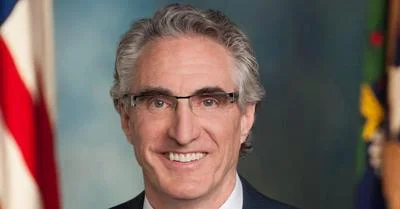CARLSBAD, N.M. - EM’s Waste Isolation Pilot Plant (WIPP) is known worldwide as a nuclear waste repository.
But it’s also recognized throughout the world for scientific research requiring low levels of background radiation.
That’s how scientist Maurizio Tomasi of Rome found himself 2,150 feet underground at WIPP this summer with New Mexico State University (NMSU) biology professor Geoff Smith.
Smith directs research at the multi-year Low Background Radiation Experiment (LBRE), funded by EM’s Carlsbad Field Office (CBFO). The project is overseen by the Carlsbad Environmental Monitoring & Research Center with assistance from Los Alamos National Laboratory -Carlsbad Operations.
WIPP’s protective salt layer offers a 79-fold reduction in ionizing radiation for experiments. These investigations are further shielded from cosmic rays by a pre-World War II-era, 23-ton vault with a 1,000-pound door, a surplus from DOE’s Argonne National Laboratory.
Isolated from terrestrial and cosmic radiation, the LBRE tests the effects of less-than-background levels of radiation exposure to basic lifeforms. Is the absence of radiation exposure better for an organism? Worse? Somewhere in between?
Along with other research projects, the LBRE is located in WIPP’s North Experimental Area at the opposite end of the mine from the waste panels.
“It is very satisfying to see WIPP be recognized as a national resource by the quality and variety of research and experiments that are conducted in the WIPP underground by world-class scientists and engineers from several universities and national laboratories," CBFO Chief Scientist George Basabilvazo said. “The underground science and experimental testing activities at WIPP support state-of-the-art particle physics, biological, and repository science research, and also provide opportunities for researchers to test new or different equipment, systems, and concepts to further the knowledge of the techniques to improve research in these scientific areas."
Tomasi had completed work at Italy’s underground Gran Sasso National Laboratory. He met Smith at a conference in Italy and jumped at the opportunity to come to WIPP because he knew of Smith’s contributions to below-background radiation research.
Each summer, Smith works underground at WIPP with research assistants from an NMSU branch campus.
“One of the things I’m proudest of is getting students involved," Smith said.
This year, Smith and Tomasi’s research has focused on areas including E. coli and soybean, pea, and wheat germination.
Working six days a week, the researchers use unbleached damp paper towels to germinate seeds. High-grade potash from a nearby mine lines a separate incubator containing seeds, creating a minimal amount of background radiation.
“It’s not sophisticated. The sophistication is in the knowledge," Tomasi said.
There are visible differences in the germination rates of the seeds pulled from the vault, both between the varieties and the conditions under which they grow.
Tomasi takes measurements with a ruler, photographs the plants, and writes the numbers in a notebook.
Research is incremental. Another set of fresh seeds are wrapped, moistened, and placed in the incubator. The two scientists turn off the lights, lock up, and begin the trudge back toward the waste hoist that will return them to the ground surface.
They’ll be back tomorrow, looking for more answers.
“A lot of effort, but a good reward," Tomasi said.
Source: U.S. Dept. of Energy, Office of Environmental Management









